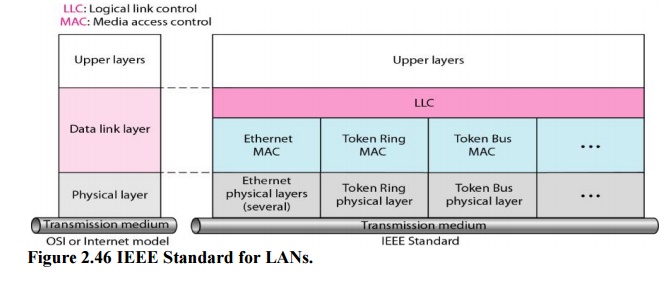Chapter: Computer Networks : Data Link Layer
IEEE Standards
IEEE Standards
In 1985,
the Computer Society of the IEEE started a project, called Project 802, to set
standards to enable intercommunication among equipment from a variety of
manufacturers. The IEEE has subdivided the data link layer into two sublayers:
logical link control (LLC) and media access control (MAC). IEEE has also
created several physical layer standards for different LAN protocols.

Logical
Link Control (LLC)
The IEEE
project 802 models take the structure of an HDLC frame and divide it into 2
sets of functions. One set contains the end user portion of the HDLC frame –
the logical address, control information and data. These functions are handled
by the IEEE 802.2 logical link control (LLC) Protocol.
Protocol
Data Unit (PDU)
Framing
LLC defines a protocol data unit (PDU) that is somewhat similar to that of
HDLC. The header contains a control field like the one in HDLC; this field is
used for flow and error control. The two other header fields define the
upper-layer protocol at the source and destination that uses LLC. These fields
are called the destination service access point (DSAP) and the source service
access point (SSAP).

Media
access control (MAC)
MAC
sublayer resolves the contention for the shared media. It contains
synchronization, flag, flow and error control specifications necessary to move
information from one place to another, as well as the physical address of the
next station to receive and route a packet.
Related Topics